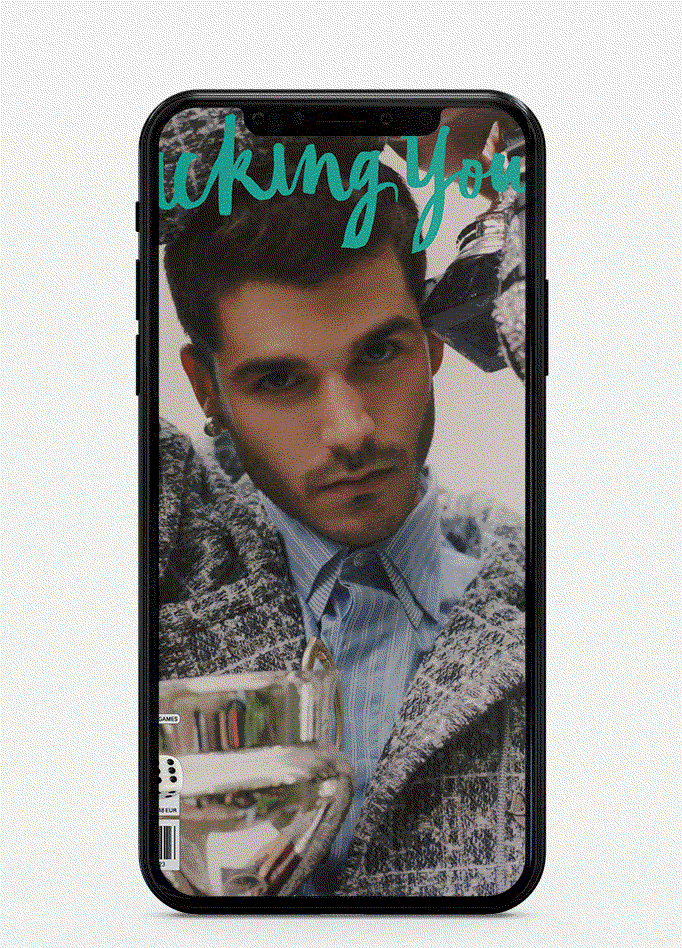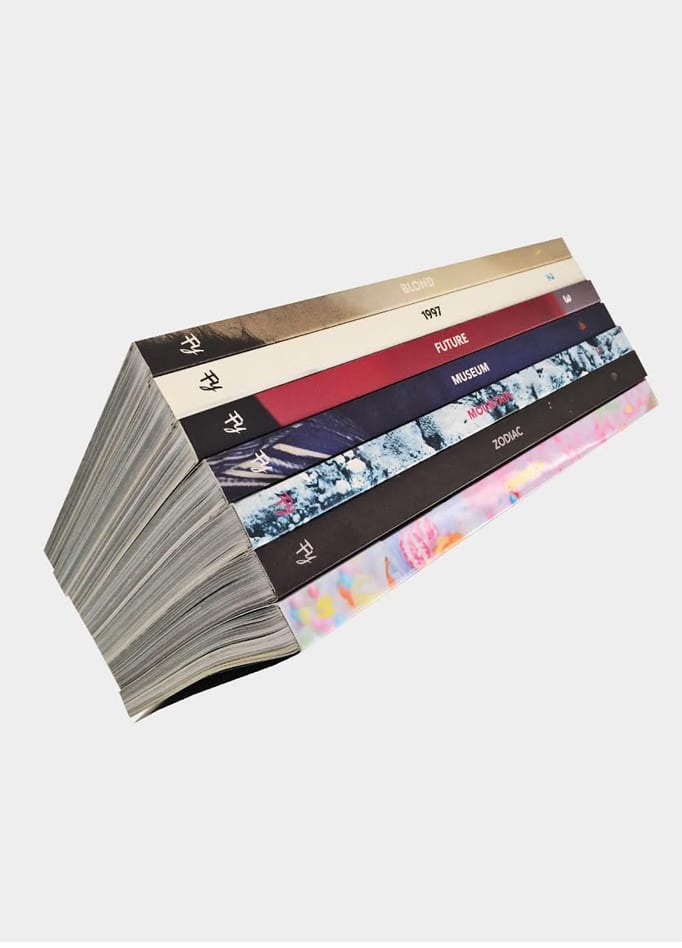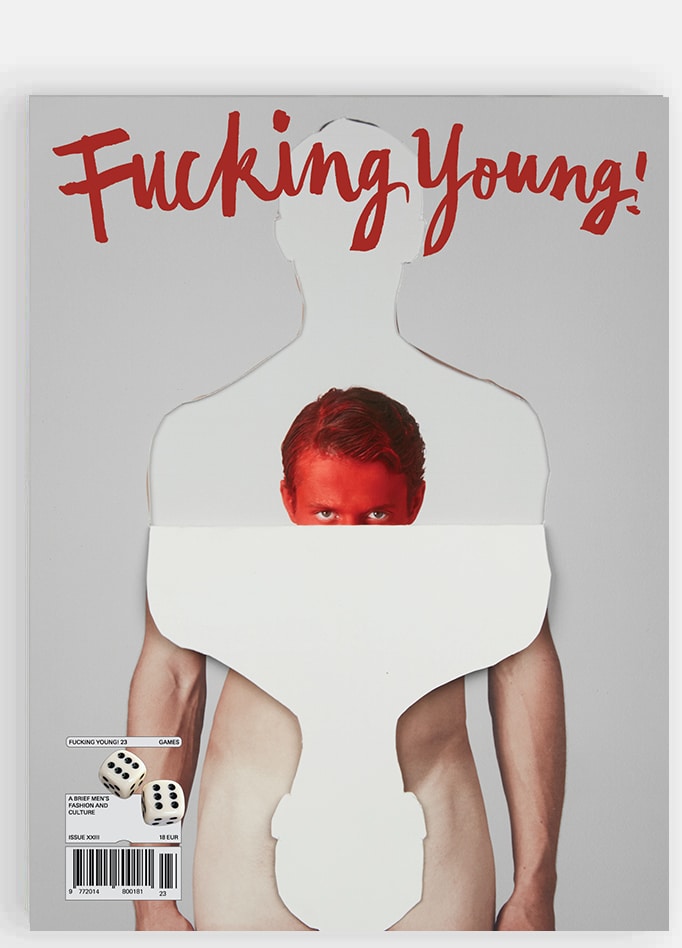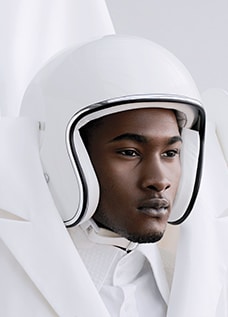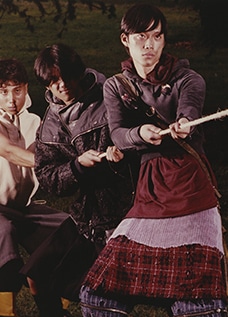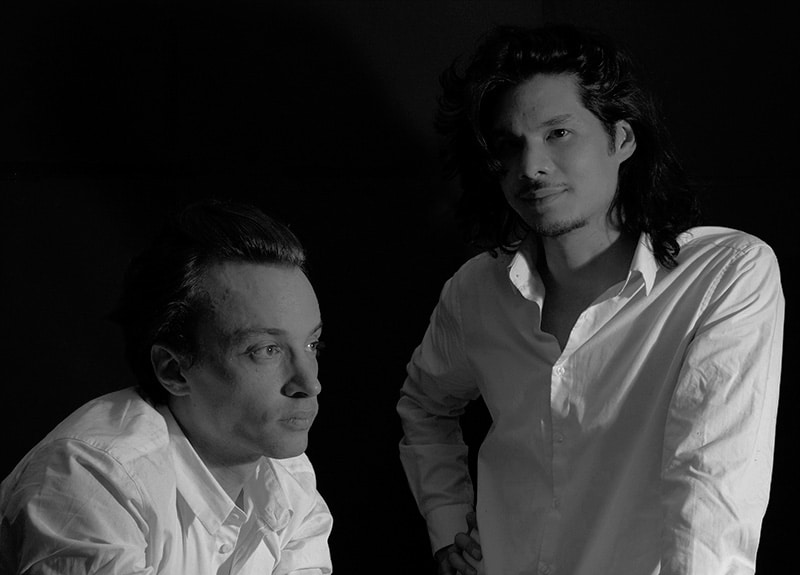
As fashion month has come to an end, at this time of the year usually dedicated to the female wardrobe for the Winter to come, from Raf Simons at Calvin Klein to Christopher Bailey at Burberry, many are those who embraced what appears to be as the new system and choose to show their womenswear and menswear collections together. In Milan, the last month, it also has been Alessandro Michele’s turn at Gucci. Hence, in a moment when the barriers between genders seem to increasingly fade, the legitimate question that comes to mind is whether dealing with male clothing per say is still relevant, or so this is what we discussed with Justin Mansfield and George Bunker, the designer duo behind the strictly menswear label BEAU HOMME, which they founded in 2012 after running into each other at the London College of Fashion. Immediately they made the discourse over the male garment tout court their own signature. Pattern cutting and the manipulation of fabric form are at the basis of their work which is inspired by the Futurists and the Mens’ Dress Reform Party, a group of British gentlemen that existed between 1929 and 1940, who both rejected the limitations of traditional male tailoring, as well as by designers such as Madeleine Vionnet, Cristóbal Balenciaga and Pierre Cardin. While Justin and George find that a focused persistence towards achieving goals and the ability to inspire others are respectively each other’s best qualities, they state that the key of their aesthetic is a “fearless intelligent individualism with impeccable manners”, which they feel could be best represented by a vintage 1950s patched up biker jacket lined in midnight blue silk.
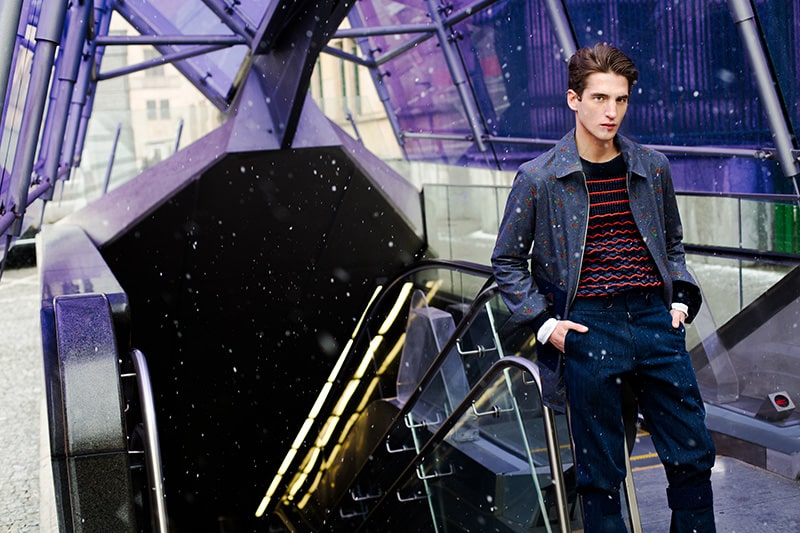
Sharing has become a crucial aspect of today’s society and economy. Also in fashion we see brands often cooperating to blend their aesthetics and obtain an even more powerful result. How much important was sharing your two personal visions and different backgrounds in the creation of your brand? And how much important it is today in working together?
Our sharing of visions and backgrounds was vital in the creation of the brand. BEAU HOMME is an ongoing dialogue of two designers considering the most effective articulation of the contemporary in a tangible way. Our joint collaboration encourages a nuanced brand voice, which would be impossible working separately. As a matter of fact, the further development of humanity is dependant on sharing, and fashion and appearance are the most immediate and widespread modes to do that. The impulse to share an emotion or experience is the catalyst of all art. We are all linked together as students and teachers both. The capacity to work together, by sharing stories, our knowledge, and ourselves is the only way available for progression, both personally and collectively.
How does your creative process work and what is your daily working routine?
Our creative process is sparked by the need for excitement and stimulation. We begin to investigate a topic thoroughly enough to discover connections not immediately obvious. Fashion also demands meticulously organized systems of scheduling, accounting, and other processes which can’t be neglected. Discipline combined with consistent hard work is the essential ingredient for a successful collection. In fact, the majority of creativity expended goes towards critical thinking to effectively solving problems. There does exist a paradox though in all this regimentation. New ideas are only fostered when established modes are challenged. As much as one must attempt order and routine, exploration and mistakes are required to achieve innovation. We proceed by asking lots of questions and gaining perspective on others viewpoints. Through these discussions, we are able to observe a thing or a facet of life, which we had previously taken for granted. Metaphorically, we overturn the neglected stones of peoples’ lives and explore the knowledge and experience located there.

Your brand has been named after Beau Brumell, known as the first dandy. How do you combine this with the tangible vanguard component of your creations?
The design process is analogous to cooking. Through the thoughtful combination of disparate ingredients, the master chef aspires to delight their diner with a hint of the unexpected thrown into the conventional. As fashion designers, we deconstruct the male garment and then reformulate the elements creating a new and original style. The classic forms remain the same but are then refigured in an individualist style reflecting our own aesthetic.
How relevant is being based in London and how does the city inspire you?
Surely it is an integral aspect of the brand. The multitudes contained within London are so very distinctive, and the energy of the street provides a continual sense of inspiration as well. It is important for us to be located in such an international metropolis to witness and intuit the shifting moods of culture, attitudes, needs and habits of our potential customers. These attributes in conjunction with the guidance and support provided by the British Fashion Council and The UK Fashion and Textile Association make London the ideal place for us to work.
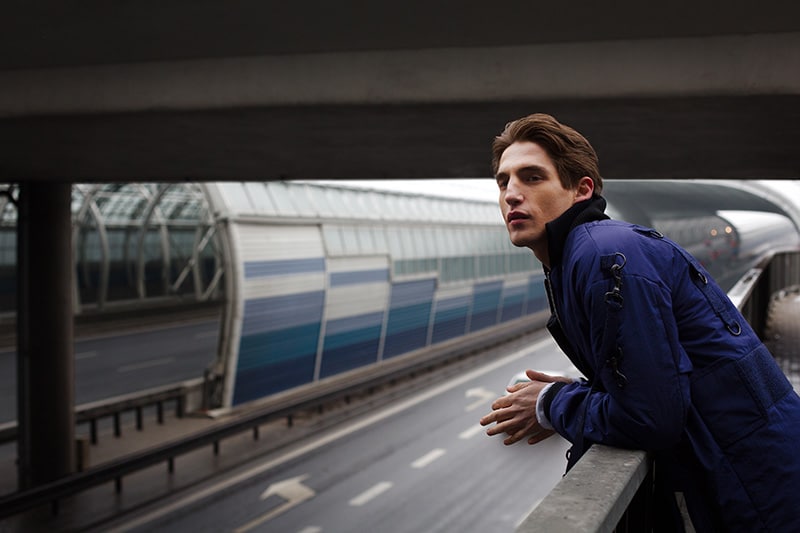
What do you think is the city’s role in today’s fashion industry and what do you expect it to be in the future?
London is regarded as the most creative of the fashion capitals. There is a youthful exuberance propelled by the perpetual influx of design students worldwide. English cultures propensity towards the eccentric seasons the London collections with a taste of cheekiness and an individualistic coy wink.
What’s the aspect of designing clothes that gives you the most pleasure? And the one you don’t like at all?
The most pleasurable aspect of designing is the tremendous challenge of it. You must constantly stay informed of the world markets, shifting trends, and global moods. The required skill set encompasses so many varied attributes and abilities. Attempting the seemingly impossible, the making great of sacrifices, maintaining a disciplined consistency with integrity intact: these choices have been painful but are necessary. The overruling negative aspect of the fashion industry is the systems ruthless machinations to continually produce, produce, and produce.
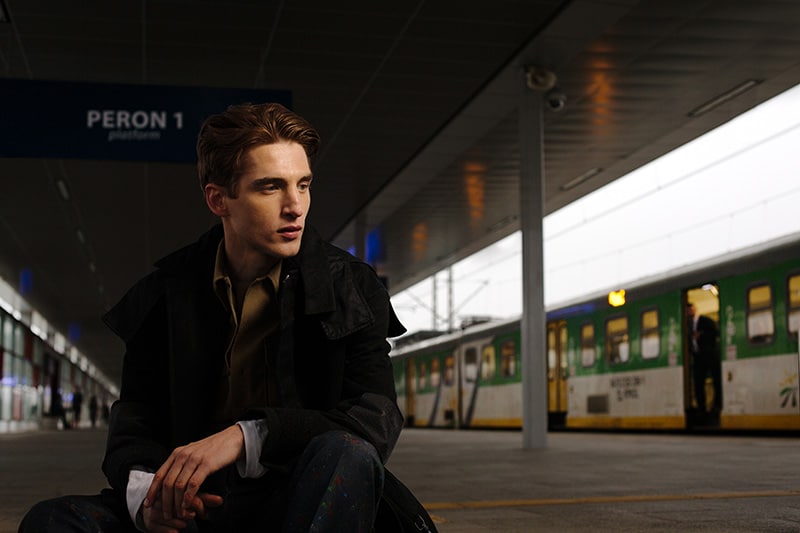
Why do you think that investigating the garment’s structure is so important? What does it have to say about contemporary men and the world we live in?
For over a century, the suit and blazer have remained the predominant forces governing the entire menswear industry. Choices were offered but remained scarce: two-buttons or three, peaked lapel or notched lapel, European or American cut. Instead, we want to provide men with a broader base of personal expression by incorporating new structures to clothing, rather than presenting an apprehensive offering of “menswear classics with a twist”. BEAU HOMME overturns restrictions and instead offers “the ingenious with a classic twist”.
Today the notions of masculinity thrust upon men limit the expansion of the self. On the contrary, men possess the same capacity for creativity, imagination and complexity that women have. Generations of men have been neglected of a loving father-son relationship because of father’s emotional limitations imposed by the status quo. The options readily available to women to express the totality of themselves and the complexity of personas are not accessible to men. By broadening the range of men’s fashion, we hope to redefine notions of masculinity. Our interest in expanding the menswear territories is to affirm the personalities and characters of all the men who exist outside limited trope of male archetypes and incite them to be brave enough to be themselves and be strong in their sense of self.
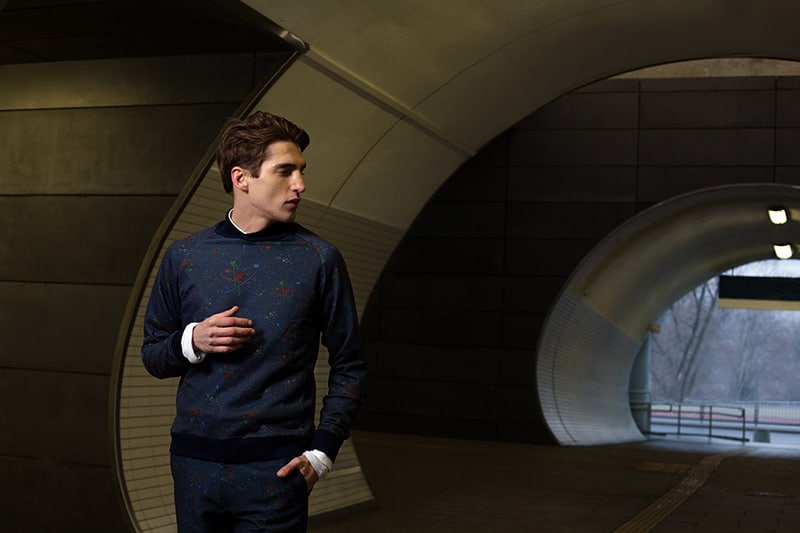
Why do you think that focusing on male clothing is still relevant?
Menswear and womenswear, while currently merging in some specific marketplace divisions, will continue to remain predominantly gender based and marketed separately. The merchandising of an appropriate product for both the majority of men and women remains extremely limited. This trend appears to be enormously weighted towards women buying men’s clothes and for good reason: male garments have a tendency to be better constructed. Also they are less influenced by the vagaries of fashion and provide ample pockets and pocket size nonexistent in female versions. We also believe this merging together of collections has less to do with gender fluidity, and is instead a tactic for designers to show their women’s pre-collections tacked onto their mainline men’s collections.
Fashion nowadays seems to often deal with politics or social issues: I think for example of sexual identity and diversity issues, t-shirts with claim against terrorism or the fact that many brands refused to dress Melania Trump to oppose themselves to the US president’s agenda. Do you think that fashion can still convey a strong political statement?
Fashion undoubtedly conveys a political message. In an ever-increasing fast paced world, it is an instant indication of character and of the individual’s emotional and intellectually connection to the world. Politics affects all of our lives and cultures. Fashion is not frivolous, even if the speed at which the cycle it moves may make it appear so. It is woven into our lives as an evolving language indicating cultural affiliations, perceived notions of power and of ones own self-worth.

“Imagined Futures Yesterday” is the title of your AW17 collection. How does the tradition of menswear clothing design has inspired it? And how do you imagine the male wardrobe will change in the future?
The tradition of utilitarian clothing was a guiding influence in the development of the collection. In exploring military garb, we became interested in providing a dual functionally for the wearer. Through the application of Velcro, we experimented with how the material could augment forms and even create new ones. The trousers feature Velcro straps and which allow for easy adjusting of trouser width and the sizing of outerwear is adjustable through the use of Velcro tabs too. Taking the concept of functionality to its greatest extent, we also designed jackets that transform into serviceable “manbags”.
In the future, we expect to see a greater synthesis between fashion and technology. Although appearing as completely disparate disciplines initially, both areas have the shared objective of continual forward progress and discovery of the new. The intersection of these two different sorts of creative thinking is going to be exciting to witness.
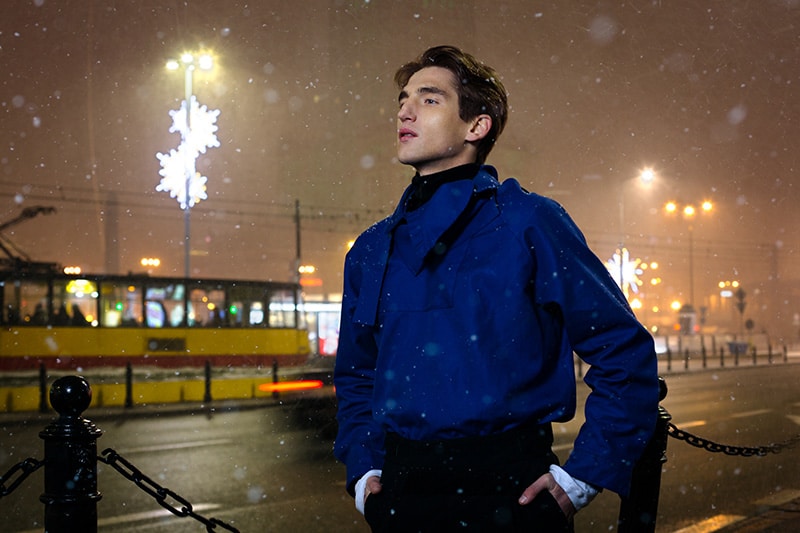
In this collection you also talk about “eccentric individualism”. In a time when we are constantly over-stimulated by fashion images almost giving a pre-customized look for each individual, how much important do you think it is for everyone to find one’s personal identity? And how did you find yours?
A strong personal identity is not for everyone. Few people with a strong personal identity will ever know the contentment of those “normals” strictly adhered to cultural expectations. The key component to the development of character and identity is struggle. To struggle, to preserve, to experiment, and dare to fail gloriously. In a media cycle programmed to instil a constant fear, we must celebrate the singularity of one another. Rather than society functioning as a jeering reality talent show, we have to cultivate the bravery within ourselves to explore the wholeness of who we are and provide encouragement for others to do the same.
We suppose our own personal identity was discovered through a combination of involvement in the arts and a complete ineptitude at sports. Through reading, travelling and time spent alone we were given plenty of time to let our mind drift and develop our imagination.
In your collection the atom is a recurring motif, as if you where trying to find the formula of what contemporary menswear is. What did you discover in this journey?
As tiresome as it sounds, particularly to us creative types, we learned that oneself discipline is key. It must override the fear of failure or expectation of any goal. You just have to keep going and don’t believe that success exists on some future horizon. Your success is that you are doing it now. You can’t always be great, or great the results you wished for, but you can always be consistent. Whatever it is that you want, commit fully. Show up, work hard.
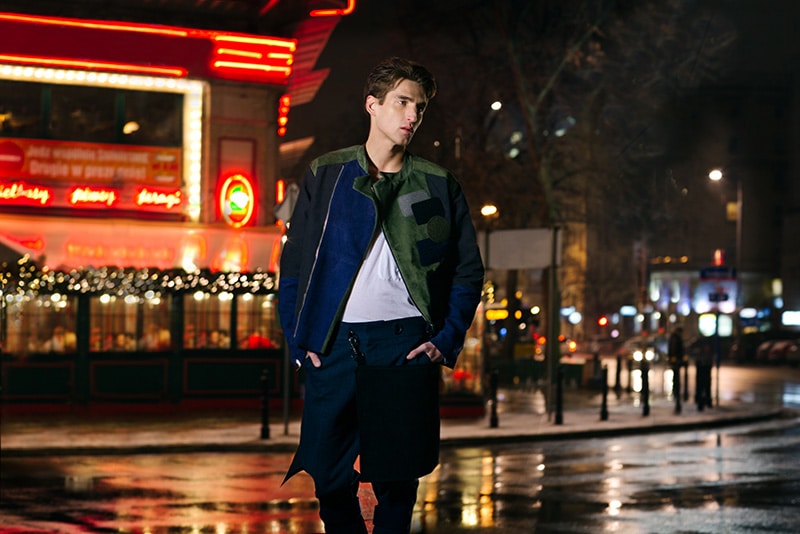
Finally, why do you think that curiosity is so significant?
Uncertainty is the only certainty. So why not wonder “What if?”
It very well could happen. Why can’t it not happen? Why can’t it not happen to you?
Curiosity ignites creativity. To wonder makes the daily tedium of life so much easier to bear.
Photographer: Cy Karrat
Photographer Assistant : Joanna Wierzbicka
Art Direction: George Bunker
Stylist: Marcela Stańczyk
Hair & Make-up: Roksana Kruszewska
Model : Anatol Modzelewski














